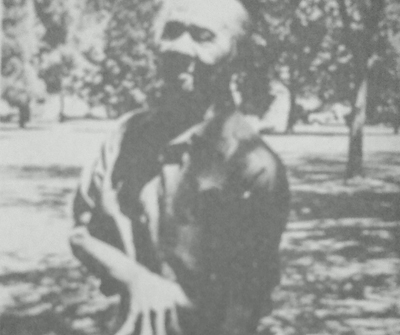Because the Filipino martial arts (FMA) originally existed as a battlefield art, the initial objective of practice was to develop functional fighting skills. Side benefits of training like longevity and deep spirituality were appreciated but were not considered a requirement.
Like other highly evolved combative systems, the FMA possess three modes of practice essential to mastery, they are: solo training, two-man training and live sparring.
Solo training
Unless an escrimador lives with his guro, chances are he has to practice by himself most of the time. Solo training is very important because it is during this time that the student would digest and express what his teacher has taught him in class.
Solo training also requires a high degree of self-discipline. It’s easy to be motivated when you’re practicing with your teacher or a fellow student but not so when you’re training alone.
There are certain elements of the FMA that a practitioner can develop all by himself among them are correct form, speed, power and endurance.
Techniques can be practiced isolated or in combination to develop proper form. The ideal progression is to practice each technique individually and then in combination. Delivering combinations can be learned by practicing anyos (forms) or sayaws (dances) prearranged or freestyle. Classical escrima practice has carenza, which is a form of shadow boxing.
Hand speed in escrima can be developed via solo training by practicing techniques repetitively. Speed and power though should only be added after correct form is achieved. This is because proper form eliminates wasted motions, which results in executing techniques with greater speed and power.
Power and endurance can be developed through weapons practice if heavy sticks and swords are employed in hitting a sandbag or stroking thin air. But there are other ways to develop these attributes besides standard escrima weapons training. Power can be developed by weights training or bodyweight exercises while endurance can be attained by running or plyometrics to name a few. Meditation and visualization also fall under solo training.
Two-man training
There are aspects of FMA training that cannot be perfected alone but only with a partner. Foremost of these is the judging of proper combative distance – the equivalent of ma-ai in karate. Only with a training partner can an escrimador learn how to gauge the optimum distance for offense and defense.
Kinesthetic sensitivity drills like tapi-tapi also requires that another person feed you the right energy so you can learn to detect pressure or lack of pressure through touch and exploit it to your advantage in close quarter encounters.
Flow, the most distinctive characteristic of FMA movements can solely be developed by two-man training. The FMA flow, roughly defined is the seamless transition from one movement to another while blending your energy with that of your opponent’s. FMA drills that best characterize flow are sumbrada and sinawali.
Unlike hitting that can be learned alone, disarms and grappling can only be learned with a partner. Disarms and grappling are basically about joint manipulation, leverage and positioning, and these can only be learned properly with a live training partner.
Live sparring
Finally, there is live sparring. The practice of sparring serves as filter to determine the purpose of each technique you have accumulated. Through sparring you will learn which techniques are for fighting, which techniques are better off practiced as an exercise for developing certain attributes, and which techniques are done solely for the purpose of artistic expression.
Another important purpose of sparring is that it develops fighting spirit. There is no better way to attain the heart of a warrior than to spar.
There are various levels of FMA sparring depending on the practitioner’s goal. The various levels are differentiated by the amount of protective armor that the participants use.
Beginning practitioners who just want to test their techniques in a live manner are better off using ample protection. As they get better, they could gradually diminish the amount of protection used.
Only the individual practitioner should determine how far he wants to go. There are FMA practitioners who spar with minimal protection and there are even a few who advocate the return to juego todo tradition (live sticks and no armor at all). If these modes of sparring would serve whatever purpose you have in mind, then go ahead and try them. But I don’t think it is right that you would jump into these things just to impress other people. Remember, serious injury sustained from these pursuits could put you out of training for a long time even permanently not to mention how it could affect your ability to work and sustain your livelihood.
I once told a fellow martial artist that I always insist on wearing protective goggles when doing knife sparring. That is because I want to ensure that I still have both eyes when I have to fight for real.





















